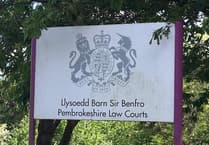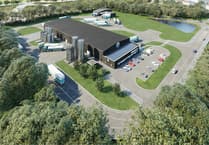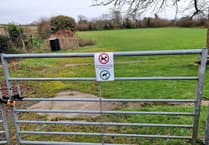The work to install new public access defibrillators at 23 of Mid and West Wales Fire and Rescue Service’s Fire Stations has now been completed – which now means that all of the area’s fire stations are located within 500 metres of a PAD.
This has been made possible through a partnership with Save a Life Cymru (SALC) and the Welsh Ambulance Services NHS Trust (WAST), which identified 23 MAWWFRS Fire Stations that were not in close proximity to a PAD.

The partnership was officially launched at MAWWFRS’s Headquarters Open Day in September 2023, with the unveiling of the first unit funded through the partnership at Carmarthen Fire Station.
As well as increasing the number of PADs across Wales, SALC has been providing sessions to teach and familiarise communities with cardiopulmonary resuscitation (CPR) and using a PAD.
A sudden cardiac arrest can happen to anyone, at any age, and every year in Wales, over 6,000 people suffer an out of hospital cardiac arrest.
The chance of surviving one will fall by 10% with every passing minute if someone doesn’t attempt CPR or using a defibrillator, currently only around 30-40% of people who suffer a cardiac arrest in the community will receive bystander CPR.
Speaking at the launch of the partnership, MAWWFRS Chief Fire Officer Roger Thomas said: “MAWWFRS Fire Stations are recognised as community landmarks and are strategically located throughout our communities.
“I am delighted that this new partnership means that an increased number of our Fire Stations will now have 24-hour access to PADs which will greatly improve patient outcomes in the event of a cardiac arrest.”
Professor Len Nokes, Chair of Save a Life Cymru said: “I am delighted that Save a Life Cymru and the Welsh Ambulance Services are continuing their partnership with MAWWFRS by giving communities in the region an improved 24/7 access to lifesaving defibrillators.
“This announcement is timely, as February is also known as Defibuary - a whole month to focus on encouraging people to become defibrillator aware so more lives can be saved if a cardiac arrest happens.
“Our Save a Life Cymru’s Community Co-ordinator in West Wales, Marc Gower, continues to work with MAWWFRS and communities across the region to coordinate and manage more defibrillator installations.
“He will support the defibrillator registration process on The Circuit - the national defibrillator network - to ensure that defibrillators are known and available to the 999 emergency call takers, to help save more lives.”
Carl Powell, Acute Care Clinical Lead, said: “A cardiac arrest can happen to anyone, anywhere, at any time and public access defibrillators along with cardiopulmonary resuscitation are vital in the chain of survival.
“The placement of defibrillators on fire stations continues the commitment to help those most in need, as increasing the number of defibrillators in the community are shown to improve a person’s chance of survival after suffering a cardiac arrest, so a big thank you goes to Mid and West Fire Service for this initiative.
“Defibrillators are easy to use and are designed to be used by anyone. We would encourage all public access defibrillators to be registered on The Circuit, a national defibrillator network database provided by the British Heart Foundation.
“If a device is not registered, our 999-emergency call takers won’t know if a defibrillator is close by and available for an emergency.”
The completion of the rollout of new PAD units at MAWWFRS Fire Stations comes as the WAST launches its annual, month-long ‘Defibuary’ campaign, which is designed to educate the public about the importance of CPR and defibrillation.
Defibrillators are simple and safe to use, with no prior training required to operate one. Once activated, it will tell you exactly what to do and when and how to deliver a safe shock.
“When you dial 999, the call taker will instruct you on where the nearest registered defibrillator is located and a code to open the cabinet if required.
A cardiac arrest is when a person’s heart stops pumping blood around their body and they stop breathing normally, whereas a heart attack is when one of the coronary arteries becomes blocked, the heart muscle is then robbed of its vital bloody supply and if left untreated, it will begin to die due to lack of oxygen.
A heart attack and a cardiac arrest are both emergency situations – always call 999 straight away.




